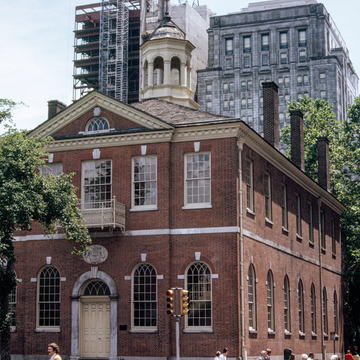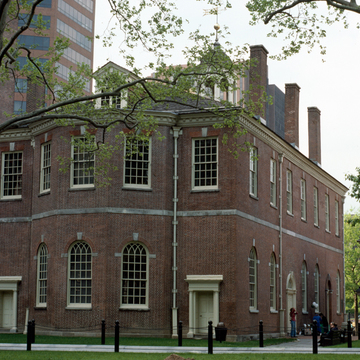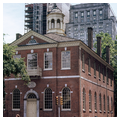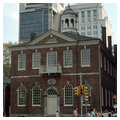You are here
Congress Hall (Philadelphia County Courthouse)
The courthouse betrays the shift toward the lighter and more delicate forms of the late eighteenth century, reflecting the London works of the Adam brothers, particularly in the detail of the cornices, while the pedimented and projecting center derives from older models. Built to house the county courts that had outgrown the ancient building in the center of High (now Market) Street, it was turned over to the federal government in 1790 to house the United States congress. This necessitated significant changes including the construction of a gallery in the first floor representatives’ chamber. The addition of new states nearly doubled the House membership, resulting in an extension to the south in 1793. Here the Bill of Rights was ratified in 1791, George Washington took the oath of office for his second term in 1793, and in 1797 gave his Farewell Address.
Writing Credits
If SAH Archipedia has been useful to you, please consider supporting it.
SAH Archipedia tells the story of the United States through its buildings, landscapes, and cities. This freely available resource empowers the public with authoritative knowledge that deepens their understanding and appreciation of the built environment. But the Society of Architectural Historians, which created SAH Archipedia with University of Virginia Press, needs your support to maintain the high-caliber research, writing, photography, cartography, editing, design, and programming that make SAH Archipedia a trusted online resource available to all who value the history of place, heritage tourism, and learning.







